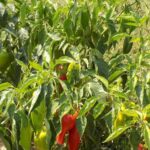Are you passionate about growing your own food and want to maximize your harvest throughout the year? If so, then a vegetable gardening calendar is an essential tool for planning and organizing your planting schedule. By understanding the importance of seasonal planting and learning how to prepare your garden for each season, you can ensure a bountiful harvest of fresh, home-grown produce.
Seasonal planting plays a crucial role in the success of your vegetable garden. Knowing when to plant specific crops according to the weather and climate in your region is key to reaping a plentiful harvest. Whether you’re a seasoned gardener or just starting out, utilizing a vegetable gardening calendar will help you stay on track with your planting schedule and ensure that you make the most of each growing season.
In this article, we’ll discuss the significance of seasonal planting, provide a planting guide for spring vegetables, share care and maintenance tips for summer vegetables, explore fall harvesting and preparation for winter, offer tips for extending the growing season, and explain how to utilize a vegetable gardening calendar for success. With proper planning and care, you can maximize your harvest and enjoy an abundance of fresh produce from your own backyard.
Understanding the Importance of Seasonal Planting
When it comes to vegetable gardening, understanding the importance of seasonal planting is crucial for a successful and bountiful harvest. Seasonal planting refers to the practice of sowing and harvesting crops based on the specific climatic conditions and temperature changes that occur throughout the year. By aligning your planting schedule with the natural rhythm of the seasons, you can optimize the growth and yield of your vegetables.
The Impact of Seasonal Planting
Seasonal planting has a significant impact on the growth and development of vegetables. Different plants have varying temperature and sunlight requirements, so planting them at the right time is essential for their overall health and productivity. For example, cool-season vegetables like lettuce and spinach thrive in spring and fall when temperatures are milder, while warm-season crops such as tomatoes and peppers require warmer weather to flourish.
Maximizing Resources
By adhering to a vegetable gardening calendar that outlines specific planting dates for each season, gardeners can make the most out of their resources. Proper timing reduces the risk of crop failure due to frost, heat stress, or other weather-related issues. Additionally, seasonal planting allows for optimized space usage in your garden beds or containers, ensuring that every square inch is utilized efficiently throughout the year.
Environmental Benefits
Seasonal planting also offers environmental benefits by promoting natural biodiversity and reducing the need for artificial interventions such as pesticides or excessive watering. Sowing vegetables at their appropriate times aligns with their natural growing patterns, resulting in healthier plants that are more resistant to pests and diseases.
Furthermore, seasonal gardening encourages sustainable water usage by matching plant water needs with local precipitation patterns, ultimately reducing water waste. By embracing seasonal planting practices, gardeners can create a more resilient and environmentally friendly vegetable garden ecosystem.
As you delve into your vegetable gardening efforts, understanding how seasonal planting impacts your crops is essential for achieving success. By recognizing the unique requirements of each season and adapting your gardening practices accordingly, you can cultivate a thriving vegetable garden throughout the year.
Preparing Your Garden for Each Season
One of the key factors in a successful vegetable garden is proper planning and preparation for each season. Whether you are growing tomatoes in the spring or harvesting root vegetables in the fall, it is important to understand the unique needs of your garden at different times of the year. By following a vegetable gardening calendar, you can ensure that your garden stays productive and healthy throughout the changing seasons.
In order to prepare your garden for each season, it is important to start with good soil preparation. This may include adding compost or organic matter to improve soil structure and fertility.
Additionally, you may need to adjust the pH levels of your soil based on the specific requirements of the vegetables you plan to grow in each season. It is also crucial to remove any weeds, debris, or leftover plant material from the previous season to prevent diseases and pests from carrying over.
Another important aspect of preparing your garden for each season is selecting the right varieties of vegetables that are suited for that particular time of the year. Some plants thrive in cool weather, while others require warm temperatures to grow. By choosing appropriate vegetable varieties for each season, you can maximize your chances of a successful harvest.
After soil preparation and selection of plant varieties, it’s essential to plan your planting schedule according to a vegetable gardening calendar. Different crops have different planting times, and understanding these timelines will help you space out your plantings and ensure a continuous harvest throughout the growing season. By utilizing a vegetable gardening calendar and following these steps for preparing your garden for each season, you can set yourself up for a bountiful harvest year after year.
Planting Guide for Spring Vegetables
Spring is a wonderful time for vegetable gardeners, as it marks the beginning of the growing season and a chance to start planting a variety of delicious fresh produce. With the right planning and care, you can ensure a successful harvest of spring vegetables in your garden.
Choosing the Right Vegetables
When planning your spring vegetable garden, it’s important to choose vegetables that thrive in cooler temperatures. Some popular options for spring planting include lettuce, spinach, radishes, peas, carrots, and kale. These vegetables can withstand the lingering chill of early spring and will produce bountiful crops if properly cared for.
Preparing Your Soil
Before planting your spring vegetables, it’s crucial to prepare your soil to provide the best growing conditions. Start by clearing any debris from your garden beds and loosening the soil with a rake or hoe. Adding well-aged compost or organic fertilizer will help improve soil fertility and provide essential nutrients for your growing plants.
Planting and Maintenance
Once your soil is prepared, it’s time to plant your spring vegetables according to the recommendations on your vegetable gardening calendar. Pay attention to spacing requirements and recommended planting depths for each type of vegetable. After planting, be sure to water regularly and keep an eye out for any signs of pests or disease. With proper care, you’ll soon be enjoying a bountiful harvest of fresh spring vegetables from your garden.
By following these planting guidelines and utilizing a vegetable gardening calendar tailored to your specific region, you can set yourself up for a successful spring vegetable garden that will provide you with nutritious and delicious produce throughout the season.
Care and Maintenance Tips for Summer Vegetables
Summer is the time when your vegetable garden starts to flourish and produce an abundance of fresh, delicious vegetables. However, it’s also the time when your garden requires extra care and maintenance to ensure a successful harvest. Here are some important tips to keep in mind for caring for and maintaining your summer vegetables:
- Watering: Summer heat can quickly dry out the soil, so make sure to water your vegetable garden regularly, especially during dry spells. Early morning or late afternoon is the best time to water to reduce evaporation.
- Weeding: With the warmer weather, weeds tend to grow more rapidly. Regularly check and remove any weeds that may compete with your vegetables for nutrients and water.
- Fertilizing: Your summer vegetables will benefit from regular feeding. Use a balanced fertilizer or organic compost to provide them with essential nutrients for healthy growth and better yields.
Pest control is another crucial aspect of caring for summer vegetables. Keep an eye out for common pests such as aphids, caterpillars, and beetles, and take prompt action to prevent infestations.
Disease prevention is also important during the summer months. Proper air circulation, adequate spacing between plants, and avoiding overhead watering can help reduce the risk of diseases such as powdery mildew and blight affecting your vegetable garden.
By following these care and maintenance tips for your summer vegetables, you can ensure a bountiful harvest of fresh produce throughout the season. Remember that each vegetable has its own specific requirements, so be sure to tailor your care routine accordingly using a reliable vegetable gardening calendar.
Fall Harvesting and Preparation for Winter
As the weather begins to cool and the days grow shorter, fall is the perfect time to start harvesting the remaining vegetables from your garden and prepare for the winter months. It’s important to carefully plan and take action to ensure a successful transition from fall to winter.
One essential task during this time is to harvest any remaining vegetables before they are damaged by frost. Root vegetables such as carrots, beets, and potatoes should be dug up and stored in a cool, dry place. Leafy greens like kale and spinach can withstand cooler temperatures and actually become sweeter after a light frost, making them perfect for fall salads.
Another crucial step in preparing your garden for winter is to clean up the garden beds by removing any dead plant material and adding a layer of compost or mulch. This will help protect the soil, add nutrients, and prevent weed growth during the winter months. Additionally, consider planting cover crops such as clover or rye to protect the soil from erosion and add organic matter.
In addition to preparing your garden for the winter, it’s also important to start planning for next year’s vegetable garden. Take some time to review your successes and failures from this year’s gardening season so you can make adjustments for next year.
Looking ahead at your vegetable gardening calendar can help you get a head start on ordering seeds or starting seedlings indoors for early spring planting. By taking these steps now, you will set yourself up for a successful growing season next year.
| Vegetable | Harvest Time |
|---|---|
| Carrots | Fall |
| Kale | Fall/Winter |
| Clover/Rye (cover crops) | Winter |
Tips for Extending the Growing Season
Extending the growing season for your vegetable garden is a fantastic way to increase your overall harvest and enjoy fresh produce for a longer period of time. With the right techniques and tools, you can continue to cultivate delicious vegetables well into the fall and even early winter months. Here are some tips for extending the growing season in your vegetable garden:
- Use Row Covers: Row covers are lightweight, breathable fabrics that can be placed over crops to protect them from frost and extend the growing season.
- Utilize Cold Frames: Cold frames are bottomless boxes with a clear lid that can be placed over soil and young plants, creating a warm microclimate that protects against cold temperatures.
- Plant Cool-Weather Crops: Consider planting vegetables such as spinach, lettuce, kale, carrots, and radishes in late summer or early fall for a late-season harvest.
One of the most important strategies for extending the growing season is to select vegetable varieties that are well-suited for late-season growth. Look for cultivars that have shorter maturity dates or are specifically bred for cool weather or frost tolerance. By choosing the right plants, you can ensure that your garden continues to thrive even as temperatures begin to drop.
In addition to these techniques, it’s important to regularly monitor weather patterns and be prepared to cover plants on nights when frost is likely. With proper planning and care, you can successfully extend your vegetable gardening calendar well beyond the traditional growing season.
Utilizing a Vegetable Gardening Calendar for Success
A vegetable gardening calendar is an essential tool for any gardener, whether you are a beginner or have been gardening for years. It serves as a guide to help you plan and organize your planting schedule, ensuring that you make the most out of each season. By following a vegetable gardening calendar, you can optimize your garden space and resources, leading to a more productive and bountiful harvest.
One of the key benefits of using a vegetable gardening calendar is the ability to maximize your garden’s potential by planning ahead. The calendar provides valuable information on when to start seeds, transplant seedlings, and harvest vegetables based on your specific climate and growing zone. This allows you to make the most out of the limited growing season, ensuring that you can enjoy a variety of fresh produce throughout the year.
Additionally, a vegetable gardening calendar helps in preventing common gardening mistakes such as planting too early or too late. By following the recommended planting dates in the calendar, you can avoid costly errors that may result in stunted growth or failed crops. Proper timing also ensures that your plants receive the optimal conditions for growth, leading to healthier and more robust vegetables.
| Benefit of Using Vegetable Gardening Calendar | Description |
|---|---|
| Maximizing garden potential | With proper planning and organization through the calendar, you can optimize your garden space and resources for a more bountiful harvest. |
| Preventing common gardening mistakes | The calendar provides recommended planting dates to avoid errors such as planting too early or too late which may lead to poor crop yield. |
Conclusion
In conclusion, a well-organized vegetable gardening calendar is a vital tool for success in your garden. By understanding the importance of seasonal planting and preparing your garden for each season, you can ensure that your vegetables thrive throughout the year.
The planting guide for spring vegetables provides valuable insights into what to plant and when, while the care and maintenance tips for summer vegetables help ensure a bountiful harvest. Fall harvesting and preparation for winter are essential steps in maximizing your garden’s productivity.
Additionally, tips for extending the growing season can help you enjoy fresh produce for longer periods. Utilizing a vegetable gardening calendar not only helps you stay organized but also maximizes your harvest by ensuring that you are planting and caring for your vegetables at the optimum times. Proper planning and care are essential for achieving success in your garden, and a vegetable gardening calendar can be an invaluable resource in this regard.
By utilizing the guidelines provided in a vegetable gardening calendar, you can maximize your harvest with proper planning and care. Whether you are new to gardening or have years of experience, having a well-thought-out plan can make all the difference in the success of your vegetable garden. With the right tools, knowledge, and dedication, you can enjoy a bountiful harvest of delicious homegrown produce throughout the year.
Frequently Asked Questions
What Month Should I Plant My Vegetable Garden?
The best month to plant your vegetable garden depends on the specific vegetables you want to grow and your local climate. In general, many vegetables can be planted in the spring after the last frost and in the fall for a second harvest.
Is It Too Late in the Year to Plant Vegetables?
It may not be too late to plant vegetables, especially if you live in a region with a longer growing season or if you choose fast-maturing varieties. You can still plant quick-growing vegetables like lettuce, radishes, and spinach.
What Is the Growing Season in California?
The growing season in California varies depending on the region. In Southern California, the growing season typically runs from March through November, while in Northern California, it can start as early as February and last until October. The milder climate allows for a longer growing season compared to other parts of the country.

If you’re looking to get into vegetable gardening, or are just looking for some tips on how to make your current garden better, then you’ve come to the right place! My name is Ethel and I have been gardening for years. In this blog, I’m going to share with you some of my best tips on how to create a successful vegetable garden.





